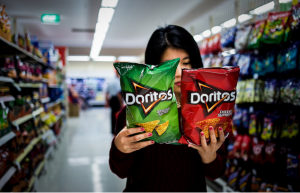Within the world of psychology research, time is often not kind to empirical findings. This unkindness was highlighted recently in the results of the reproducibility project, which found that the majority of psychological findings tested did not appear to replicate particularly well. There are a number of reasons this happens, including that psychological research tends to be conducted rather atheoretically (allowing large numbers of politically-motivated or implausible hypotheses to be successfully floated), and that researchers have the freedom to analyze their data in rather creative ways (allowing them to find evidence of effects where none actually exist). These practices are engaged in because positive findings tend to be published more often than null results. In fact, even if the researchers do everything right, that’s still not a guarantee of repeatable results; sometimes people just get lucky with their data. Accordingly, it is a fairly common occurrence for me to revisit some research I learned about during my early psychology education only to find out that things are not quite as straightforward or sensible as they had been presented to be. I’m happy to report that today is (sort of) one of those days. The topic in question has been called a few different things, but for my present purposes I will be referring to it as choice overload: the idea that having access to too many choices actually results in making decisions more difficult and less satisfying. In fact, if too many options are presented, people might even avoid making a decision altogether. What a fascinating idea.
Here’s to hoping time is kind to it…
The first time I had heard of this phenomenon, it was in the context of exotic jams. The summary of the research goes as follows: Iyengar & Lepper (2000) set up shop in a grocery store, creating a tasting booth for either six or 24 varieties of jams (from which the more-standard flavors, like strawberry, were removed). Shoppers were invited to stop by the booths, try as many of the jams as they wanted, given a $1 off coupon for that brand’s jam, and then left. The table with the more extensive variety did attract more customers (60% of those who walked by), relative to the table with fewer selections (40%), suggesting that the availability of more options was, at least initially, appealing to people. Curiously, however, there was no difference between the average number of jams sampled: whether the table had 6 flavors or 24, people only sampled about 1.5 of them, on average, and apparently, no one ever sampled more than two flavors (maybe they didn’t want to see rude or selfish). More interestingly still, because the customers were given coupons, their purchases could be tracked. Of those who stopped at the table with only six flavors, about 30% ended up later purchasing jam; when the table had 24 flavors, a mere 3% of customers ended up buying one.
There are a couple of potential issues with this study, of course, owing to its naturalistic design; issues which were noted by the authors. For instance, it is possible that people who were fairly uninterested in buying jam might have been attracted to the 24-flavor booth nevertheless, simply out of curiosity, whereas those with a greater interest in buying jams would have remained interested in sampling them even when a smaller number of options existed. To try and get around these issues, Iyengar & Lepper (2000) designed another two experiments, one of which I wanted to cover. This other experiment was carried out in a more standard lab setting (to help avoid some of the possible issues with the jam results) and involved tasting chocolate. There were three groups of participants in this case: the first group (n = 33) got to select and sample a chocolate from an array of six possible options, the second group (n = 34) got to select and sample a chocolate from an array of 30 possible options, and a final group (n = 67) were randomly assigned to test a chocolate they had not selected. In the interests of minimizing people’s familiar preferences for such things, only those who enjoyed chocolate, but did not have experience with that particular brand were selected for the study. After filling out a few survey items and completing the sampling task, the participants were presented with their payment option: either $5 in cash, or a box of chocolates from that brand worth $5.
In accordance with the previous findings, participants who selected from 30 different options were somewhat more likely to say they had been presented with “too many” options (M = 4.88) compared with those who old had 6 possible choices (M = 3.61, on a seven-point scale, ranging from “too few” choices at 1, to “too many” choices at 7). Despite the subjects in the extensive-choice group saying that making a decision as to which chocolate to sample was more difficult, however, there was no correlation between how difficult participants found the decision and how much they reported enjoying making it. It seemed people could enjoy making more difficult choices. Additionally, participants in the limited-choice group were more satisfied with their choice (M = 6.28) than those in the extensive-choice group (M = 5.46), who were in turn more satisfied than those in the no-choice group (M = 4.92). Of particular interest are the compensation findings: those in the limited-choice group were more likely to accept a box of chocolate in lieu of cash (48%) than those in either the extensive-choice (12%) or no-choice conditions (10%). It seems that having some options was preferable to having no options, but having too many options seemed to cause people difficulty in making decisions. The research concluded that, to use the term, people could be overloaded by choices, hindering their decision making process.
“If it can’t be settled via coin flip, I’m not interested”
While such findings are indeed quite interesting, there is no guarantee they will hold up over time; as I mentioned initially, lots of research fails to do likewise. This is where meta-analyses can help. This is the kind of research where the results from many different studies can be examined jointly. Scheibehenne et al (2010) set out to conduct one of their own on the research surrounding choice overload, noting that some of the research on the phenomenon does not point in the same direction. They note a few examples, such as field research in which reducing the number of available items resulted in decreases or no changes to sales, rather than what should have been a predicted uptick in them. Indeed, the lead author also reports that their own attempt at replicating the jam study for their dissertation in 2008 failed, as well as the second author’s attempt to replicate the chocolate experiment. These failures to replicate the original research might indicate that the initial results of choice overload were something of a fluke, and so a wider swath of research needs to be examined to determine if that’s the case.
Towards this end, Scheibehenne et al (2010) collected 50 experiments from the literature on the subject, representing about 5,000 participants in 13 published and 16 unpublished papers from 2000-2009. In total, the average estimated effect size for the choice overload effect across all the experiments was a mere D = 0.02; the effect was all but non-existent. Further analysis revealed that the difference in effect sizes between studies did not seem to be randomly distributed; there were likely relevant differences between these papers determining what kind of results they found. To examine this issue further, Scheibehenne et al (2010) began by trimming off the 6 largest effects from both the top and the bottom ends of the reported research. The results showed that, in the trimmed data set, there was little evidence of difference between the remaining research. This suggests that most of the differences between these studies was being driven by unusually large positive and negative effects.
Returning to the complete, untrimmed data set, Scheibehenne et al (2010) started to pick apart how several moderating variables might be affecting the reported results. In line with the intuitions of Iyengar & Lepper (2000), preexisting preferences or expertise did indeed have an effect on the choice overload issue: people with existing preferences were not as troubled by additional items when making a choice, relative to those without such preferences. However, there was also an effect of publication – such that published papers were somewhat more likely to report an effect of choice overload, relative to unpublished ones – as well as a small effect of year – such that papers published more recently were a bit less likely to report choice overloading effects. In sum, the results of the meta-analysis indicated that the average effect size of choice overload was nearly zero, that older studies which saw publication report larger effects than those that came later or were not published, and that well-defined, preexisting preferences likely remove the negative effects of having too many options (to the extent they actually existed in the first place). Crucially, what should have been an important variable – the number of different options participants were presented with on the high end – explained essentially none of the variance. That is to say that 18 times didn’t seem to make any difference, compared to 30 items or more
“Well, there are too many different chip options; guess I’ll just starve”
While this does not rule out choice overload as being a real thing, it does cast doubt on the phenomenon being as pervasive or important as some might have given it credit for. Instead, it appears probable that such choice effects might be limited to particular contexts, assuming they reliably exist in the first place. Such contexts might include how easily the products can be compared to one another (i.e., it’s harder to decide when faced with two equally attractive, but quite distinct options), or whether people are able to use mental shortcuts (known as heuristics) to rapidly whittle down the number of options they actually consider (so as to avoid spending too much time making fairly unimportant choices). While future examination would be required to test some of these ideas, the larger message here extends beyond the choice overload literature to most of psychology research: it is probably fair to assume that, as things currently stand, the first thing you hear about the existence or importance of an effect will likely not resemble the last thing you do.
References: Iyengar, S. & Lepper, M. (2000). When choice is demotivating: Can one desire too much of a good thing? Journal of Personality & Social Psychology, 79, 995-1006.
Scheibehenne, B., Greifeneder, R., & Todd, P. (2010). Can there ever be too many options? A meta-analytic review of choice overload. Journal of Consumer Research, 37, 409-424.




Pingback: Pop Psychology |